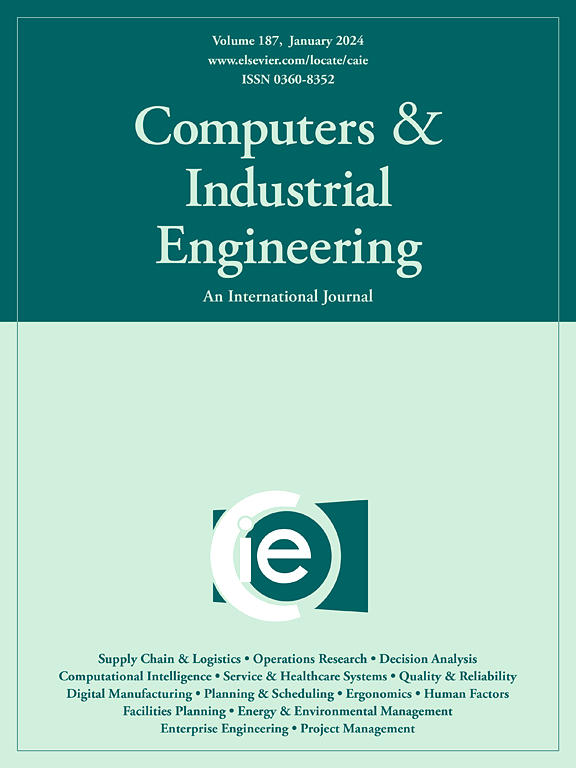用于预测半导体器件质量的数据驱动建模框架,以支持预烧决策
IF 6.7
1区 工程技术
Q1 COMPUTER SCIENCE, INTERDISCIPLINARY APPLICATIONS
引用次数: 0
摘要
对半导体器件进行老化测试是为了通过识别和消除早期寿命故障来确保产品质量。考虑到老化测试所需的成本和时间,本工作提出了一个框架来预测生产批次半导体器件在老化之前的质量。与仅依赖统计数据的传统质量预测方法不同,该框架结合了生产数据以提高预测准确性。该框架将特征提取(分段聚合近似和主成分分析)和质量估计(Clopper-Pearson估计)的统计方法与改进的概率支持向量回归(PSVR)相结合,以预测早期故障。采用贝叶斯优化技术对PSVR超参数进行了设置。该框架在一个综合案例研究中得到验证,该案例研究旨在模拟半导体设备的BI过程,然后应用于半导体生产过程中收集的实际数据。综合案例研究和实际半导体生产数据的结果证明了该方法在预测生产批次质量方面的准确性。然后,质量预测可以用于通知有效的老化测试计划,包括要进行老化的设备数量和要执行的老化测试类型。本文章由计算机程序翻译,如有差异,请以英文原文为准。
A data-driven modelling framework for predicting the quality of semiconductor devices to support burn-in decisions
Burn-in testing of semiconductor devices is performed to ensure product quality by identifying and removing early-life failures. Given the cost and time required by burn-in testing, this work proposes a framework to predict the quality of a production batch of semiconductor devices before burn-in. Unlike traditional methods for quality prediction that rely solely on statistical data, this framework incorporates production data to improve prediction accuracy. The framework combines statistical methods for feature extraction (Piecewise Aggregate Approximation and Principal Component Analysis) and quality estimation (Clopper-Pearson Estimator) with a modified Probabilistic Support Vector Regression (PSVR) to predict early-life failures. The PSVR hyperparameters are set by a Bayesian Optimization (BO) technique. The framework is validated on a synthetic case study designed to emulate the BI process of semiconductor devices and, then, applied to real data collected during semiconductor production. Results from a synthetic case study and real-world semiconductor production data demonstrate the accuracy of the proposed method in predicting the quality of production batches. The quality predictions can, then, be used to inform efficient burn-in test planning in terms of the number of devices to undergo burn-in and the type of burn-in tests to perform.
求助全文
通过发布文献求助,成功后即可免费获取论文全文。
去求助
来源期刊

Computers & Industrial Engineering
工程技术-工程:工业
CiteScore
12.70
自引率
12.70%
发文量
794
审稿时长
10.6 months
期刊介绍:
Computers & Industrial Engineering (CAIE) is dedicated to researchers, educators, and practitioners in industrial engineering and related fields. Pioneering the integration of computers in research, education, and practice, industrial engineering has evolved to make computers and electronic communication integral to its domain. CAIE publishes original contributions focusing on the development of novel computerized methodologies to address industrial engineering problems. It also highlights the applications of these methodologies to issues within the broader industrial engineering and associated communities. The journal actively encourages submissions that push the boundaries of fundamental theories and concepts in industrial engineering techniques.
 求助内容:
求助内容: 应助结果提醒方式:
应助结果提醒方式:


